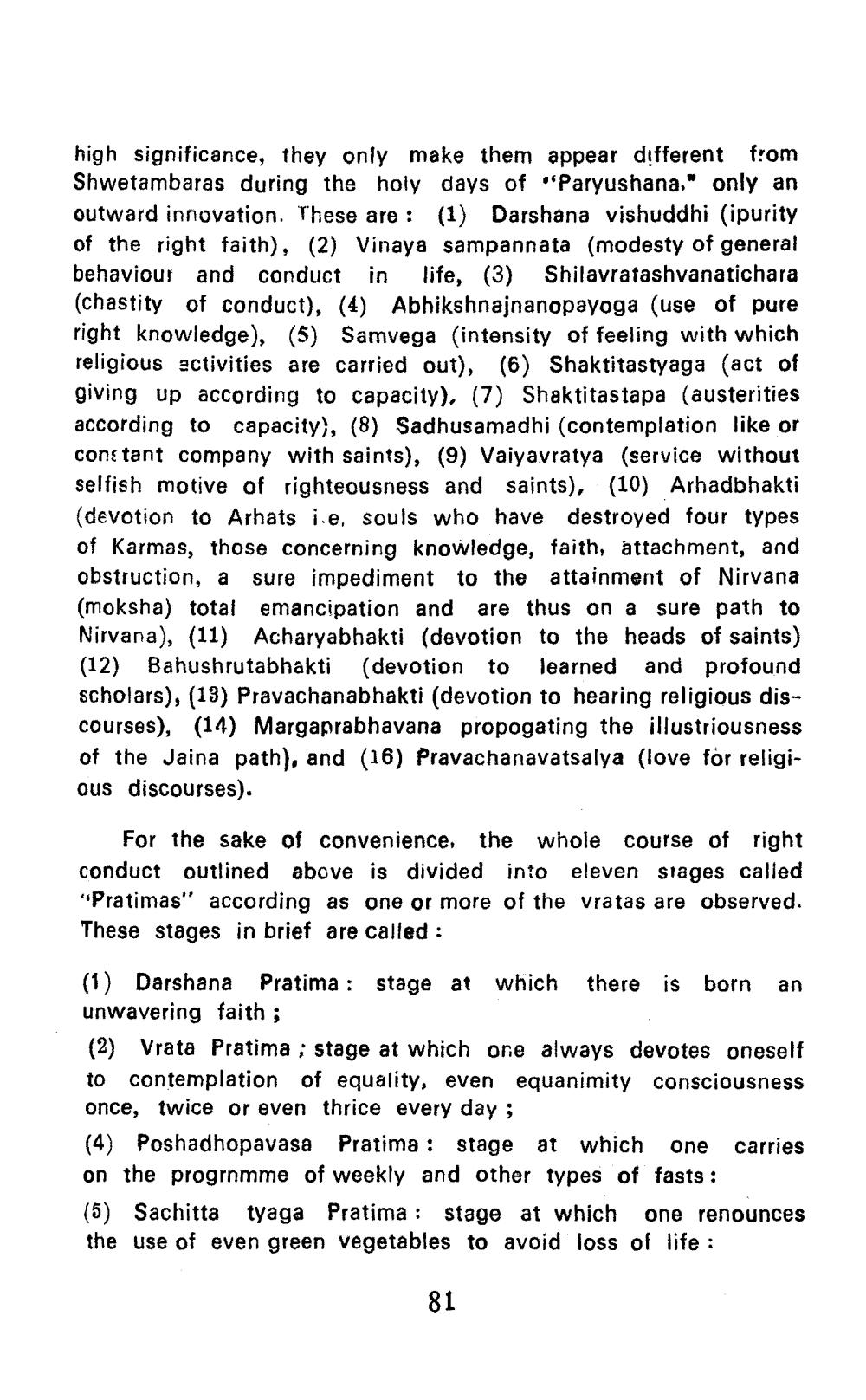________________
high significance, they only make them appear different from Shwetambaras during the holy days of "Paryushana," only an outward innovation. These are: (1) Darshana vishuddhi (ipurity of the right faith), (2) Vinaya sampannata (modesty of general behaviour and conduct in life, (3) Shilavratashvanatichara (chastity of conduct), (4) Abhikshnajnanopayoga (use of pure right knowledge), (5) Samvega (intensity of feeling with which religious activities are carried out), (6) Shaktitastyaga (act of giving up according to capacity). (7) Shaktitastapa (austerities according to capacity), (8) Sadhusamadhi (contemplation like or constant company with saints), (9) Vaiyavratya (service without selfish motive of righteousness and saints), (10) Arhadbhakti (devotion to Arhats ie, souls who have destroyed four types of Karmas, those concerning knowledge, faith, attachment, and obstruction, a sure impediment to the attainment of Nirvana (moksha) total emancipation and are thus on a sure path to Nirvana), (11) Acharyabhakti (devotion to the heads of saints) (12) Bahushrutabhakti (devotion to learned and profound scholars), (13) Pravachanabhakti (devotion to hearing religious discourses), (14) Margaprabhavana propogating the illustriousness of the Jaina path), and (16) Pravachanavatsalya (love for religious discourses).
For the sake of convenience, the whole course of right conduct outlined above is divided into eleven stages called "Pratimas" according as one or more of the vratas are observed. These stages in brief are called :
(1) Darshana Pratima: stage at which there is born an unwavering faith; (2) Vrata Pratima ; stage at which one always devotes oneself to contemplation of equality, even equanimity consciousness once, twice or even thrice every day ; (4) Poshadhopavasa Pratima: stage at which one carries on the progrnmme of weekly and other types of fasts : (5) Sachitta tyaga Pratima: stage at which one renounces the use of even green vegetables to avoid loss of life :
81




